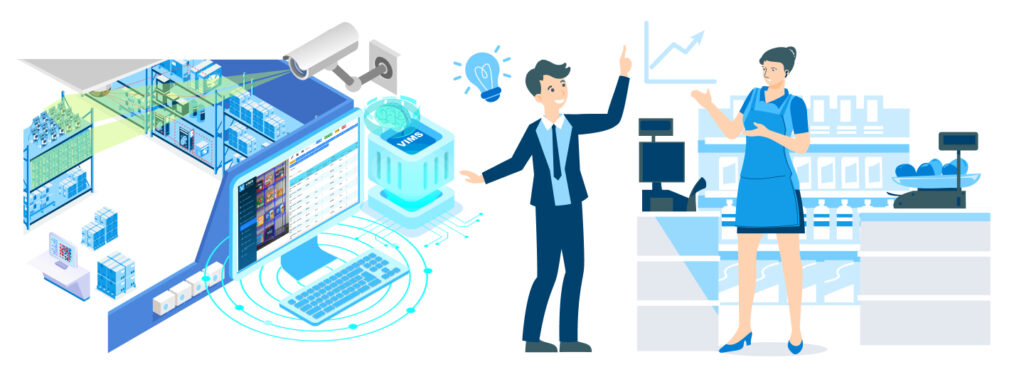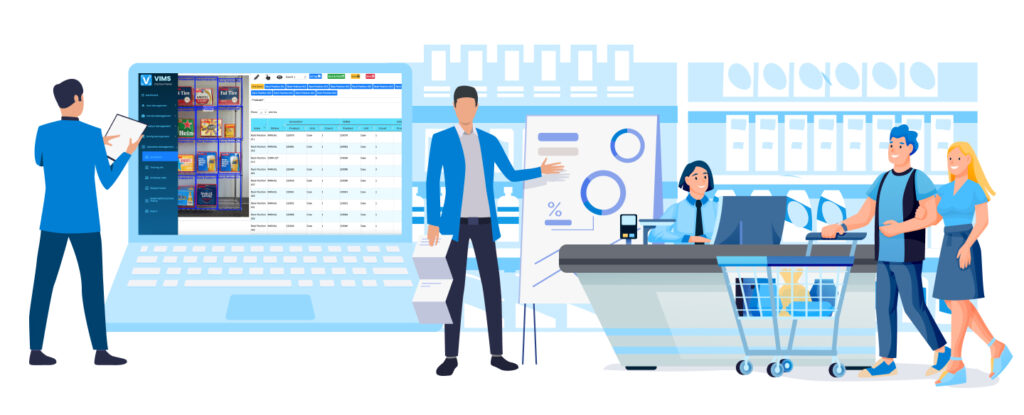COVID-19 led to supply-chain and inventory management difficulties for brands and retailers alike. While some brands and retailers struggled to cope, others embraced technology and innovative services to overcome the challenges.

Supply-chain and inventory management in a state of unrest
Reduced production capacity was one outcome of COVID-induced restrictions such as social distancing requirements in workplaces. In addition, it took time for some manufacturers to reoptimize production to meet changed supply and demand patterns. Other issues included labor shortages due to limits on movement, and material shortages caused by various upstream problems, such as a shortage of aluminum cans as beverage consumption moved from restaurants to the home. At the same time, retailers were under pressure due to restrictions on the number of employees permitted in stores to allow for as many customers as possible within the enforced limits for the premises.
Meanwhile, inventory management systems struggled to accommodate major swings in demand as consumption of various products shifted from the workplace and hospitality venues to people’s homes, and buying behaviors changed. For instance, dining out was replaced by takeaways, restaurant delivery services and home cooking (with the ingredients largely purchased at retail). Also, families stockpiled essentials like toilet paper and then didn’t buy any again for weeks or even months while they ran down those stocks.
This change in behavior contributed to a 14% increase in CPG spending between 2019-20 and 2020-21. And Americans aren’t rushing back to restaurants: 59% of people said they had not dined in a restaurant in February 2021, compared with 36% in November 2020. And seven in 10 consumers say they intend to stick with their renewed level of cooking at home.
While sales of some suprmarket categories spiked then settled back, demand has remained high for convenience items including frozen pizza, pasta, and canned soups and vegetables. Some categories have suffered falling sales, including soda, nutrition bars, and gum and breath mints.
Acceleration of existing trends led to new cost considerations

Some existing consumer habits such as BOPIS (buy online, pick-up in store) and e-commerce adoption saw major upswings over the last year. As people followed social distancing recommendations, they began to shop from home rather than in-store. Observers like McKinsey and others suggested this growth would have occurred over years instead of months if not for the pandemic.
Online orders, whether fulfilled through home delivery or BOPIS, represent additional costs to retailers in the form of the labor needed to pick and pack orders, plus the cost of delivery. And the competitive market situation means they cannot pass on these costs to customers.
Home delivery and BOPIS are clearly here to stay. According to a Shopkick survey, 55% of shoppers use BOPIS and expect to continue using it after the pandemic, so retailers need to address the cost of providing those services. One way to do this is by speeding up order picking.
In-store order picking slows down when products are out-of-stock (OOS). The pickers first need to check the stockroom, and if the item is truly unavailable, they must select a substitute, all of which takes time.
When store workers pick orders, it leads to delays in stocking shelves. Store staff may also take longer to realize that there aren’t any stocks in the backroom either. This causes dissatisfaction among both in-store shoppers who can’t find the product on the shelf, and online shoppers who may “see” the item on the retailer’s website, but find at checkout — or worse, on delivery — that this is not the case. Whatever the cause, incorrect inventory figures make it difficult (if not impossible) to maintain the required stock levels.
Some brands dispatch their own merchandisers to address OOS and other issues in selected stores, but in order to reach lower-volume and remote outlets, they typically rely on agency and broker reps. However, there is a quicker, more efficient way to address both on-shelf availability (OSA) and manpower challenges. Applying Computer Vision to shelf stock monitoring allows more frequent checks at lower cost than manual inspections.
TEMPO’s Vision Based Inventory Based Management System (VIMS)
VIMS combines TEMPO’s Computer Vision and machine learning technology with available camera infrastructure to offer advanced shelf monitoring and inventory management system.
Brands benefit from the way Computer Vision technology frees up field staff from carrying out manual shelf checks, giving them more time for value-adding activities.
VIMS takes into account brands’ own priorities and plans, so the most important merchandising tasks are promptly carried out at the highest-priority stores. The state of the shelf is captured at the start of each visit so that task prioritization occurs based on current data rather than outdated information.
VIMS is a retail and warehouse focused solution. Field sales staff is freed from doing manual audits etc pull more info from here: https://txf2b9.p3cdn1.secureserver.net/wp-content/uploads/2022/02/Vision-Based-Inventory-Management-Solution.pdf
With or without the pandemic, demand patterns will always keep changing. Retailers and brands need an accurate view of what’s on the shelf in order to adapt promptly to these changes, and VIMS provides that shelf truth and a means to act quickly when needed.

Read the TEMPO’s whitepaper to learn more about how brands can respond to changing consumer behavior while keeping costs under control.


